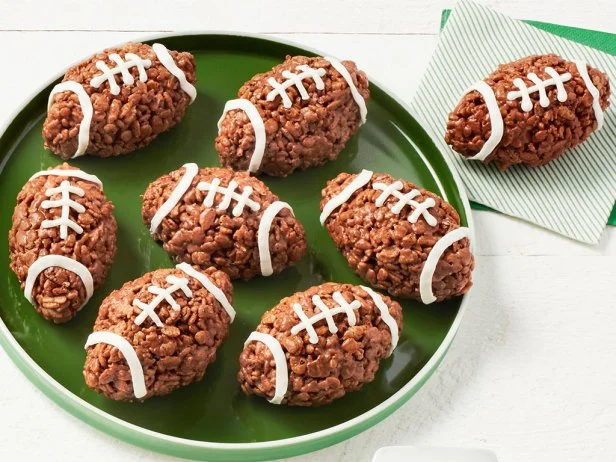Emergency Food Storage: A Complete Guide to Preparing for Hurricane
Hurricanes are unpredictable and can cause extensive damage to homes and infrastructure, often leaving people without access to fresh food and clean water for days or even weeks. One of the most essential aspects of hurricane preparedness is emergency food storage. Having a well-planned food supply can ensure that you and your family stay safe, nourished, and stress-free during the aftermath of a hurricane. In this blog, we’ll guide you through the process of creating a comprehensive hurricane emergency food storage plan that will help you stay ready for any storm.
With the help of discount and deal sites CouponXoo, you can also save money on the essential items needed to stock up your pantry for hurricane season.
Why Emergency Food Storage Is Essential for Hurricanes
When a hurricane hits, it can disrupt power, water supply, and access to stores for an extended period. Roads may be flooded, supermarkets may close, and the food that’s available could spoil quickly without refrigeration. That’s why having a well-thought-out emergency food storage plan is critical to survival and comfort during such events. Emergency food supplies not only provide sustenance but also peace of mind, knowing that your family won’t go hungry if you’re stuck indoors or without access to fresh supplies.
The Basics of Hurricane Emergency Food Storage
When planning for hurricane-related food storage, there are a few important factors to keep in mind:
-
Non-perishable items: Choose foods that won’t spoil if the power goes out or if they’re stored for an extended period.
-
Easy preparation: Opt for items that don’t require cooking or refrigeration.
-
Variety and nutrition: Include a range of items that provide balanced nutrition—carbohydrates, proteins, fats, vitamins, and minerals.
-
Sufficient quantity: Plan for at least 3-7 days of food per person, but more is always better.
Related: Hurricane Season is Here: Are You Prepared?
Essential Items for Hurricane Emergency Food Storage
Here’s a breakdown of the essential items you should consider when creating your emergency food storage for hurricane preparedness:
1. Water
Water is the most important item for survival. You’ll need enough clean water for drinking, cooking, and hygiene.
-
How much to store: It’s recommended to store at least one gallon of water per person per day for drinking and basic hygiene. Plan for a minimum of three days but aim for a week or more if possible.
-
How to store it: Purchase bottled water or invest in water storage containers that can be filled with tap water before a storm hits. You can also consider water purification tablets or portable water filters in case your supply runs out.
2. Canned Goods
Canned foods are excellent for emergency food storage because they have a long shelf life, are nutritious, and don’t require refrigeration.
-
Canned meats: Canned chicken, tuna, and salmon are great sources of protein. They’re ready to eat right out of the can and provide essential nutrients.
-
Canned vegetables and fruits: These provide vitamins and minerals to keep your diet balanced. Look for no-salt-added or low-sodium versions for better health.
-
Canned beans: Beans are a fantastic source of both protein and fiber, which help keep you full and energized.
-
Canned soups and stews: These are easy to heat (if you have access to a heat source) or eat cold in a pinch. They’re hearty and come in many varieties.
3. Dry Goods
Dry goods are lightweight, have a long shelf life, and provide essential carbohydrates and other nutrients. These are ideal for energy during long periods without fresh food.
-
Rice and pasta: While these require cooking, they’re versatile and easy to store. Consider instant versions that cook faster.
-
Instant oatmeal and cereal: These are great for breakfast and don’t require any cooking, just water or milk (even powdered milk).
-
Crackers and rice cakes: These are perfect for snacking and pairing with canned meats or cheeses.
-
Peanut butter or nut butters: High in protein, peanut butter can be paired with bread, crackers, or eaten by the spoonful when you need a quick energy boost.
4. Ready-to-Eat Meals (MREs)
Meals Ready-to-Eat, or MREs, are designed to provide full meals in portable packaging and are a staple of emergency food storage.
-
Advantages: MREs are lightweight, compact, and provide a complete meal that requires no cooking. Some MREs come with self-heating pouches, which means you don’t even need a heat source.
-
Where to buy: MREs are available in bulk online or at outdoor and survivalist stores. Look for deals on MREs on CouponXoo to save on bulk purchases.
5. Freeze-Dried and Dehydrated Foods
Freeze-dried and dehydrated foods have a much longer shelf life than most other food types and are lightweight. They typically require water for rehydration.
-
Freeze-dried fruits and vegetables: These make for healthy, lightweight snacks that store easily and require no refrigeration.
-
Dehydrated meals: Many camping and survival brands offer dehydrated meal kits that only need water to prepare.
6. Snack Bars and High-Energy Foods
Snack bars and high-energy foods are great for quick nutrition and require no preparation. They provide essential calories and nutrients to help sustain you during a disaster.
-
Protein bars: These are a convenient source of calories and nutrients. They’re portable, easy to store, and require no preparation.
-
Granola bars and trail mix: These are high-energy snacks that are easy to eat on the go and provide a mix of carbohydrates, fats, and proteins.
-
Nuts and seeds: These have a long shelf life and are excellent sources of healthy fats and proteins.
7. Powdered and Shelf-Stable Dairy
In case refrigeration is unavailable, you’ll want alternatives to fresh dairy.
-
Powdered milk: Powdered milk can be stored for a long time and only requires water to mix. It’s a good source of calcium and protein.
-
Shelf-stable milk: UHT (ultra-high temperature) milk doesn’t need refrigeration until opened and can last for several months. Plant-based milks like almond or soy milk also come in shelf-stable versions.
8. Comfort Foods
During stressful times like a hurricane, having comfort foods can help maintain a sense of normalcy and boost morale.
-
Canned or packaged desserts: Pudding cups, canned fruit cocktail, or shelf-stable baked goods can be a comforting treat.
-
Chocolate and hard candies: These items last a long time and can provide a sweet pick-me-up.
Storage Tips for Hurricane Food Supplies
Once you’ve gathered your emergency food supplies, it’s important to store them properly to ensure they remain safe and usable.
1. Store in a Cool, Dry Place
Temperature fluctuations and moisture can shorten the shelf life of food. Store your emergency supplies in a cool, dry area such as a pantry or closet. Avoid areas with high humidity, like basements or garages.
2. Use Airtight Containers
If you buy food in bulk, use airtight containers to store items like rice, pasta, or flour to prevent contamination by pests or moisture.
3. Label and Rotate Your Stock
Label each item with the date you purchased it, and make sure to rotate your stock regularly. Use older items first and replace them with fresh stock.
4. Monitor Expiration Dates
While most emergency food supplies have long shelf lives, it’s important to check expiration dates regularly and replace any items that are close to expiring.
Saving Money on Emergency Food Supplies with Coupons
Hurricane emergency food storage doesn’t have to break the bank. Here are some tips to help you save money while building your emergency food storage:
-
Use coupons: Check CouponXoo for deals on canned goods, bottled water, freeze-dried meals, and other non-perishable items.
-
Buy in bulk: Many retailers offer discounts on bulk purchases, especially on items like canned goods and MREs. Bulk buying is a great way to stock up and save at the same time.
-
Look for seasonal sales: Many stores run sales on emergency supplies at the start of hurricane season. Keep an eye on promotions and clearance sales to score great deals.
-
Shop at discount retailers: Warehouse clubs and discount grocery stores often carry large quantities of non-perishable food at lower prices.
Conclusion
Creating a well-stocked hurricane emergency food storage plan is one of the most important steps you can take to prepare for hurricane season. By having a supply of non-perishable, nutritious food and water on hand, you’ll be able to weather the storm safely and comfortably. Remember, it’s not just about survival—it’s about peace of mind, knowing you’ve taken the necessary steps to care for your family in a time of crisis. With tools like CouponXoo, you can also save money while building your emergency food storage, making preparation affordable and stress-free. Stay safe and prepared!
Related: Hurricane Safety Tips: How to Stay Safe During the Storm
DEALS DELIVERED TO YOUR INBOX.
Subscribe now for top-notch shopping & Investing advice. Receive hot Vouchers into your wallet
By submitting your information you agree to the Terms & Conditions and Privacy Policy
Related Articles
.png)
Cappuccino: The Ultimate Coffee Experience – A Deep Dive into Italy's Beloved Brew

Score Big on Flavor: 10 Football Themed Snacks and Appetizers for Game Day 2025 – Whip Them Up Now!

Save Money and Keep Your Car Sparkling with Autobell Car Wash Coupons

Best AI Tool Coupons & Discounts for Black Friday 2024

Glow Like Glass: The Ultimate Guide to Dewy Skin Makeup That Radiates from Within

Create a Winter Wonderland: 20 Outdoor Christmas Décor Inspirations
Popular Brands
View all
Pamtaw Baseball Gloves
5 Coupons Available

Salesblink
5 Coupons Available

WeUNIK World
4 Coupons Available

Par Skins
6 Coupons Available

BIGdeal Printing Solutions
5 Coupons Available

Swapzone
5 Coupons Available
Popular Articles
View all
Art the Clown Tattoo: Exploring the Terrifier Tattoo Trend
.jpg)
Best Black Friday 2024 Deals on Fitness Gear: Use Coupons to Save on Equipment and Apparel

12 Back-to-School Hairstyles That Are Cute and Easy to Replicate

Top 10 Holiday Shopping Tips for Thanksgiving

Tropical Chill: 10 Icy Island-Inspired Drinks to Escape the Heat

Top Must-Have Skincare Products for Asians This Winter
LATEST

Last updated: May 6, 2025

Last updated: Jun 17, 2025

Last updated: Jun 13, 2025

Last updated: May 9, 2025

Last updated: May 6, 2025

Last updated: Jun 17, 2025
